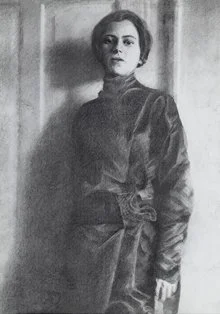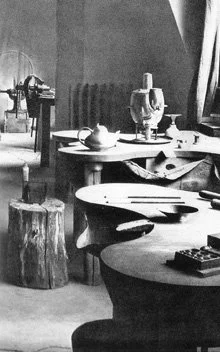Kia Ora Everyone,
It's been a very long time since I was in the routine of entering awards… must have been in the middle of a creative dead zone for a while or at least needed a period of distance to address why photography is essential to me and what I can do with it to help others/thou. I decided to attempt weaving interconnectivity, or relationships, into the space between objects in the photographs, a while back and so to have our project included in the finals of the International Marianne Award - Connectedness -Experiments on a New Relationship with Nature is timely indicator of how we are developing that process.
I’d like to acknowledge the legacy of Marianne Brandt, Project Director Linda Pense and the Board for bringing this program together. And Ilona Rosenkranz, who brought the project into existence. It’s very special to be a part of this festival. More information about Marianne's influence at Bauhaus and life as a pioneering artist in the early 20thC is below.
The International Marianne Brandt Award centres around the role of poetics and functionality. The 8th Triennial Award asked artists and designers how that which connects us with other living beings and habitats that can be newly discovered and designed. As they were seeking projects with cooperative, aesthetic, metaphorical, and poetic exchanging relationships with other organisms and natural existences. We felt it would be an excellent exercise to present part of the Landscape Fire work to the Jury.
The entry was initiated by Igor Augustynowicz and assisted with everyone's input at the CEP (Centre of Ecological Philosophy), we put together a selection of photographs from the upcoming monograph Songs of The Dead. This weekend offers a chance to learn from others that have also made connectedness essential to their artistic practice and experience of living. By writing “others”, I actually mean it in the plural you/thou sense rather than it/other sense (yet to find a work that can do that effectively in the English language).
The program for the festival weekend includes a Video talk with nominees of the award (English), moderated by the chairwoman of the Villa Arte Art Association and curator of the award, Linda Pense, who asks what is natural? Followed by the award ceremony. On Sunday, I am joined in a moderated discussion with artist Dania González Sanabria her project Ánima (The Inner Landscape). Where we discuss How can we experiment naturally?
I am reminded daily of the urgency to reform and adapt by looking far back to find solutions from our past, ways that worked well and have been forgotten about. I hope from the weekend, we will see a collective statement at a time of escalating ecological and political confusion about what really binds us as humans in this extraordinary living world.
Award Entry : This Is A Cry of Distress, and a Human Cry from Songs of The Dead | photograph by Alan McFetridge
Nominated in the categories for the 8th International Marianne Brandt Award are:
Project:
Briony Clarke
Sebastian Dukat
Helen Elizabeth
Daniel Lane
Katarína Dubovská
Lars Tobias Dittrich
Thalia Kullik
Anne-Katrin Spiess
Stephanie Wright
Xinman Wang
Thijs Biersteker
Irene Trejo
Ines Meier
Avi Farber
Maayan Sophia Weisstub
Eszter Sziksz
Fiona White
Darren Smith
Fritz Horstman
Wuchao Feng
Photography:
Charlotte Thömmes
Ronald Anzenberger
Franziska Vu
Marta Djourina
Alan McFetridge
Jane Houston Green
Kriss Munsya
Xuesheng Ma
Cristóbal Ascencio Ramos
Michelle Martins Carvalho
Roland Regner
Olana Light
Billy Barraclough
Markus Guschelbauer
Florence Iff
Rein Kooyman
Barbara Haiduck
Ute Behrend
zana briski
Dillon Marsh
Text:
Elfi Seidel
Jennifer Eckert
Naby Naïd Karimi
Sabine Hilscher
Phoebe Lee
Chris Wilmott
About Marianne Brandt
Marianne Brandt’s workstation in the Bauhaus metal workshop differed a lot from the image we have of a modern designer’s studio. From a photo taken in the first half of the 1920s we see that her workstation looked more like an artist’s forge. Marianne Brandt had even pencilled an inscription on the photo: “That was my workstation. M.B.” One can infer from this photo and her personal notes that it was predominantly arduous repoussé work that shaped her pots and other objects. The first copies of her legendary tea infuser MT 49 feature those expressive driving tool marks on the metal surface. The M 49 is available in silver, brass, and in a tombac design, all of which have a silver-plated interior, each one masterfully created by the artist’s hand.
Marianne Brandt
Marianne Brandt’s sacrosanct and irreproducible concepts emphasise the clear focus on functionality and have evolved into a legend of design. The unity: the ideal alliance of design and functionality allows us to perceive a brief glimpse of her artistic personality. In a similar manner, her ensuing designs from the metal workshop, such as lamps or assorted desktop devices, vividly express a sense of moderation. Their design is not based on dispassionately calculated proportions, but rather emerges from a stylistically confident individuality, though artistic subjectivity cannot be perceived at first glance. For a long time, Marianne Brandt’s designs have been appraised as the epitome of Bauhaus. Moreover, her concepts adhere to what Walter Gropius, founder of the Bauhaus School, called for: A concise conflation of character and function. Every creative worker is involved in the process of construction – common craftsmen as well as extraordinary artists.
Marianne Brandt was a craftswoman and moreover, an extremely diligent worker in the metal workshop, but above all, she was an exceptional artist. Perhaps, it's the hint of her distinctive thumbprint which has been so intriguing until today. We must, after all, take the fact into consideration that computer-aided design with its precisely defined measurements uncountably emerging in series, simply did not exist in her time. Hence, developing a sense for shape must have been extremely difficult to accomplish.
We know of various designs from the metal workshop which were intensively discussed, most notably by the students, called apprentices at that time. An open discussion had not always been possible at the time. In a public dispute, Marianne Brandt, who was leading the metal workshop by then, had to refute the supposition that the metal workshop simply indulged the “Bauhaus style”. She referred to the fundamental scientific work, such as an in-depth study of light curves or the examination of the industrial partner’s technical requirements, preceding the design process of innovative Bauhaus lamps. She took it upon herself to visit factories in order to familiarise herself with the requirements for an efficient production of her designs. Marianne Brandt – an early modern designer figure? It would be intriguing to continue this train of thought. Ultimately, only methods, along with scientific and technical requirements have changed over time. The design of products as the primary archetype of their function is of equal ranking with quality criterions of serially produced items. The Bauhaus postulations of efficient serial production capability of drafts according to the application parameters are still applicable. This is not the consequence of the draft but its premise. It might have been due to a certain underestimation of her achievements that her elegant tea and coffee sets attained the main focus of recognition. Pursuing her work up to the last days of her Bauhaus period, her relentless dedication to developing an industrial cooperation and a mass production capability, equals today’s assignments of designers.
The metal workshop in weimar 1923; in: Staatliches Bauhaus in Weimar 1919–1923, Weimar/München, undated, p.107
Therefore, what could possibly be more crucial for young designers than to critically analyse and assess these issues? Certainly, the times of following an example are long gone. Gaining one’s own experience is irreplaceable. Nevertheless, it is astonishing how contemporary principles discovered many years ago, virtually arising from the conditions prevailing at that time, constitute the era of modern design. It is not solely Marianne Brandt’s theoretical analyses (which she claimed not to be her field of expertise) but rather her practical work that encourages us to feel it rather than analyse it. This also applies to her master photos and photo collages.
A design contest carrying Marianne Brandt’s name allows one to refer to her body of work as a benchmark or inspiration. However, a creative personality has always been and still remains decisive for developing new ideas.
Text and Images about Marianne Brandt Courtesy of
Kunstverein VILLA ARTE e.V.
Augustusburgerstr. 102
09126 Chemnitz
& International Marianne Brandt Contest



